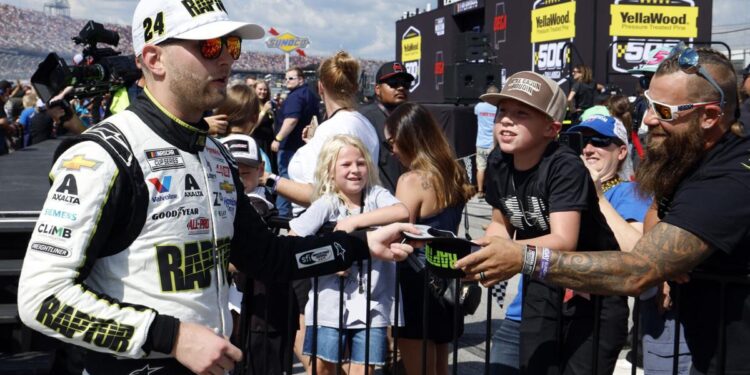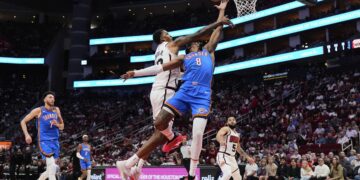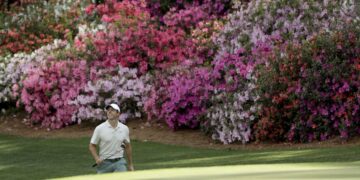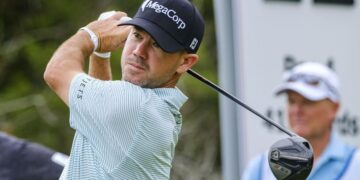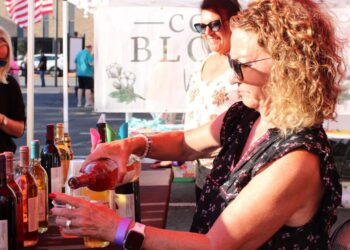CONCORD, N.C. — It’s elimination time in NASCAR’s playoffs at the reconfigured Charlotte Motor Speedway, where changes to the hybrid road course/oval called The Roval have created an uneasiness for the drivers racing for a championship.
The field of 12 will be cut by four drivers after Sunday’s race and Joey Logano, Daniel Suarez, Austin Cindric and Chase Briscoe are all below the cutline. William Byron is the only driver already locked into the round of eight, but Christopher Bell basically only needs to start the race to advance.
It means anything could happen on the reconfigured The Roval, the final race in what’s already been an unusual second round of the playoffs. A championship-eligible driver did not win at Kansas Speedway or Talladega Superspeedway, which took a chaotic turn last week at Talladega when 28 cars wrecked with five laps remaining in regulation to mark the biggest crash in NASCAR history.
Now comes The Roval, which Speedway Motorsports created in 2018 as an update to the traditional 1.5-mile speedway fans had grown weary of because of the lack of diverse courses on the NASCAR schedule. The original layout produced its own share of chaos, but drivers didn’t feel as if the course had enough passing zones.
Well, be careful what you ask for: The Roval now has a pair of “passing zones” that look a whole lot more like “crashing zones.”
The changes begin at Turn 5 where a high-speed downhill corkscrew has shown cars launching off all four wheels during simulator sessions. Instead of taking a right, the straightaway has been extended towards a new Turn 6 in a section that includes an elevation change that will alter driver visibility until they reach the crest of the hill.
The drivers will have to slow going into Turn 6, then make a sharp entrance into a tight left-handed Turn 7 in what is essentially a 180-degree turn onto the banked oval. The final chicane also has a sharper apex for the drivers to navigate at Turn 16.
“The reconfigure was designed to create more chaos. You’re going to have to convince me otherwise of that,” said Denny Hamlin. “They made corners sharper and tighter. They want you to drive straight in the corner, I believe, and wipe out whoever is in front of you, and then it’s going to be a parking lot in Turn 7. Then it’s just going to be who can navigate and get through there.
“There’s a blind spot when you go through 5 to 6, you go over a rise and your car gets really high. In the (simulator) it gets airborne. It probably won’t in real life, but we get to experience this new Roval config and I don’t know what else to say about it other than try to qualify and try to avoid the wrecks. That’s about it.”
Said title contender Alex Bowman: “Turn 6 is like 100% blind. You can’t see it until you’re there, which is pretty interesting. And Turn 7 is like making a U-turn on a one-way street, so it’s going to be chaos, for sure.”
Is that fair for the drivers, who must quickly learn a new layout while their title chances are on the line?
“It’s the same for everybody,” said reigning Cup champion Ryan Blaney. “It’s going to be different for everyone and it will just be who can adapt to it the quickest. I’ve done some (simulator) work. We’ll see where it goes.”
Damaged vehicle policy addressed
NASCAR this week was forced to meet with Cup Series crew chiefs to clarify how the damaged vehicle policy will be enforced the remainder of the playoffs following its disastrous implication last week at Talladega.
There’s confusion about the DVP rule since drivers Ryan Blaney and Josh Berry were in first-lap incidents in playoff races. Although the damage appeared minimal to both cars, the way the DVP rule had been previously officiated, both were deemed out of the race and ineligible to be towed to the pit stall because they were unable to continue after contact.
And then last Sunday at Talladega when a 28-car crash brought out the red flag, NASCAR struggled to control the cleanup. Numerous damaged cars were stranded with flat tires at the entrance of Turn 3, and playoff contenders Chase Elliott and Briscoe were towed back to their stalls to allow for repairs.
Under previous implementation of the rule, the cars should have been ruled out of the race because they had four flat tires and were not able to drive back to pit road.
Even worse, the cars towed back to pit road were allowed to work on repairs when NASCAR lifted the red. Only problem? The cars that didn’t crash were being held on the backstretch by the pace car.
Want to reach a local audience and grow your business?
Our website is the perfect platform to connect with engaged readers in your local area.
Whether you're looking for banner ads, sponsored content, or custom promotions, we can tailor a package to meet your needs.
Contact us today to learn more about advertising opportunities!
CONTACT US NOW